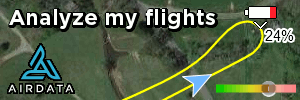"The use of UV filters is much hyped in forums like this, causing beginners to assume they need to use UV filters even if they don't."It's not rude at all, I was being brief.
Here I'll give you a longer version.
When you understand enough about UV filters, what they can do for you and whether what you are doing with the drone would benefit from using UV filters, then you'd be in a position to tell for yourself.
But if you don't already have that understanding, then you don't need UV filters for your drone.
The use of UV filters is much hyped in forums like this, causing beginners to assume they need to use UV filters even if they don't.
UV filters? I assume this was a typo, wasn't it? Or you were using UV filters as case in point? For the benefit of the readers I think you should clarify your response.
Last edited:








